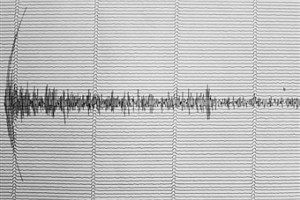
Justin Hartman, PE
Principal
Justin received his Bachelor of Science in Engineering with an Engineering/Pre-Architectural Emphasis and his Master of Science in Civil Engineering with an Emphasis in Structural…
View Profile
Having grown up in the Oklahoma City area and now living in Tulsa, it has always been tornadoes, thunderstorms and the occasional snow or ice storms that seem to unleash mother nature’s fury and create the headlines for the evening news. When news about earthquakes occurring in other parts of the country or around the world made headlines, there was a sense that here in Oklahoma we were insulated from that part of nature’s wrath. That was until a few years ago. As anyone knows from being in or around Oklahoma recently, earthquakes have now become the norm, particularly in the central part of the state. From January to May of this year, for example, approximately 145 quakes registered at least a 3.0 magnitude or greater in our state. While a majority of the events have been small in scale, there have been some quakes substantial enough to result in structural damage.
The recent surge in quakes has heightened public awareness of earthquake (seismic) design of structures in our area. Oklahoma is governed by the International Building Code which includes requirements for seismic design. A properly engineered building structure designed under current codes will provide a load path with adequate strength and flexibility to transfer the code prescribed seismic forces from the roof and floor levels, through shear walls or structural frames and to the foundations. In addition to the seismic design of the primary structure, building codes require various levels of component bracing for seismic forces depending on the design category of the building. Examples of component bracing might include bracing of sprinkler pipes, ceiling grids, interior walls, and fixtures. Examples of component anchorage might include anchorage of mechanical and electrical equipment, storage racks and shelving to name a few. This component bracing and anchorage is intended to prevent failure of critical operational systems such as electrical and fire protection systems during an earthquake as well as prevent components from shifting, overturning, or falling which could create a hazard for the building occupants.

Are you passionate about the AEC industry? Do you want to use your talents with a group of the greatest engineers, landscape architects, technicians and support personnel in the industry? You've found the right place. Wallace is unique in the way we strive to make lives better for our clients, communities and employees. And we believe we have more fun doing our job than just about anyone else! The art of possibility. Discover it at Wallace.
Learn More
There are no comments.